Vasily Grabin's tank epic
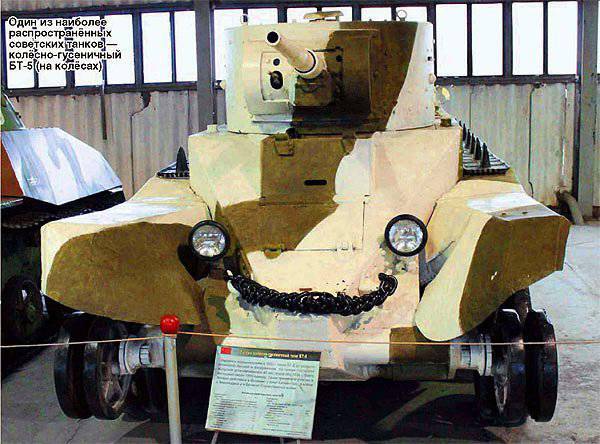
“The armor is strong, and Tanks ours are fast ... ”- these words of the march of Soviet tankers, of course, are true. Armor protection, maneuverability and speed, indeed, are very important for any combat vehicle. But for a tank, just them are not enough. Obviously, he can not do without artillery weapons. About domestic tank guns of V.G. Grabina and we’ll talk today.
ON THE EVE OF WAR
In general, an assessment of the effectiveness of a tank comes down to the question of how its three most important general characteristics are related to each other: speed and maneuverability, power of armor protection, and strength of weapons. In each historical period, and the different armies placed emphasis here in their own way. In the 30s of the last century, in the leadership of the Red Army, priorities were placed precisely in the above order. The basis of the Soviet armored forces was light T-26 tanks and BT family vehicles. Two-turret versions of the T-26 were armed only with DT machine guns or a 37 mm cannon and machine gun, and the single-turret BT-5 and BT-7 were equipped with a 45-mm 20-K tank gun with a barrel length of 46 calibers. The same guns stood in two towers of the heavy five-tower T-35 tank. It should be noted that for that time the 20-K was quite a worthy weapon in its field, surpassing many foreign guns of light and medium tanks.
The three-tower T-28 was considered the main medium tank. One of its towers was armed with a 76-mm KT-28 cannon, the same guns were placed in the main tower of the heavy T-35. The 76 mm is a very large caliber for tank guns of those years. Only here the barrel length of the CT-28 was just 16,5 caliber ... The language does not turn now to call effective gun, producing 6,23-kilogram projectile with a speed of the order of 260 m / s. Despite the prevalence of this instrument, it cannot be said that it fully satisfied the experts.
In 1936, in the Kirov Design Bureau, an 76-mm L-10 tank gun with a length of 26 caliber was designed. Led the design I.A. Makhanov. The initial velocity of the projectile was already about 550 m / s. This was certainly a step forward. But the main requirements of the leadership of armored troops to gunsmiths remained small dimensions and weight of the gun. How not to mention the strange delusion that a long cannon will be clogged with earth when overcoming a moat? The whole idea of the Soviet tank building 1930-ies. lies in deciphering the abbreviations of BT tanks - “High-Speed Tanks”. The tank BT-7 on wheels could reach speeds on the highway up to 72 km / h! At the same time he had a reservation in 15 mm. On such machines began to work out "jumps" through small obstacles. Created amphibious tanks, and even had projects flying.
Naturally, not only Soviet tank troops before the war went on this "evolutionary" path. German Pz.l and English "Vikkers" (a prototype of our first T-26) did not have gun armament at all and had only anti-bullet armor. But they didn’t require high speeds from them either: about 35 km / h. Yet their main goal was to support the infantry. In terms of speed, BT “American” and German Pz.III could not keep up with BT, although they developed about 60 km / h. With their 37-mm cannons, they even slightly lost in armament. Only now their armor was twice as thick ...
Of course, among the reasons for the defeat of the armored forces of the Red Army in 1941 there was an insufficient training of personnel, a very unsatisfactory technical condition of the park, and the almost complete absence of radio communications among the troops. What a sin to confess: in the design in the pursuit of manufacturability sometimes ignored the convenience of operation. But another significant mistake was the irrepressible desire for speed and mass. The policy of “cap-sacking” negatively influenced the strategy of waging tank war. Tanks were introduced to some commanders as “mechanized cavalry”: to slip (who are lucky) the line of anti-tank defense and roll enemy lines with tracks.
In the Red Army, by the beginning of the Great Patriotic War, there were practically no medium tanks, it’s hard to talk about heavy tanks: T-28 средних medium-sized ’tanks produced 500 units, and heavy T-35 units produced 60 units. At the same time, only light tanks of the BT-7 model were manufactured over 5000, T-26 of various modifications and more than 10.000 at all. The tactics of using tanks were incorrect - such a concept as “shooting from the spot” was simply absent. And in motion, without proper stabilization systems, accurate firing is almost impossible.
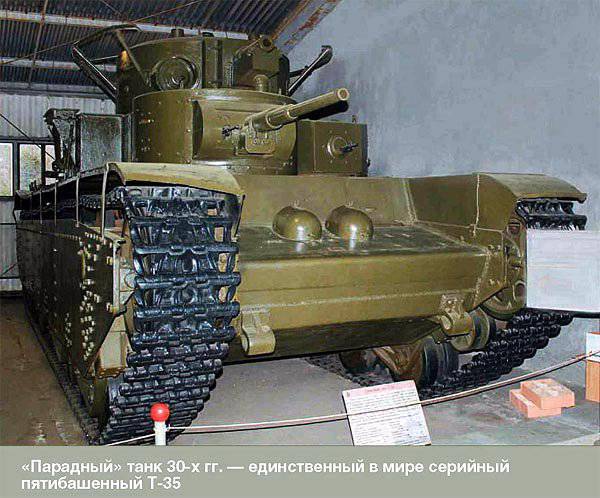
"Funeral prayer" of our tank technology 30-ies. read the war itself. She also showed the prospects of some of our pre-war developments - KV-1 and T-34. They both on booking, and on reliability, and thirty-four and on speed characteristics significantly won against any foreign counterparts. The holes in the field of medium and heavy tanks began to be gradually closed with beautiful modern equipment. Of course, the weapons on these machines were already of a different level ...
FIRST TANK GUNBREADS
But the fate of the KV-1 and T-34 weapons could have been completely different if there had not been one, seemingly unremarkable meeting at one time. In the summer of 1937, two artillery specialists meet in one of the Sochi sanatoriums. The first was a young military engineer, an employee of the artillery committee of the SAU, Ruvim Yevalevich Sorkin. The second turned out to be the chief designer of the Volga Volga plant design bureau No. XXUMX Vasily Gavrilovich Grabin. By that time, the X-NUMX-mm divisional gun F-92, the first brainchild of the young team led by Grabin, was adopted by the Red Army. He had to defend this weapon in the highest instances, thanks to which he earned the recognition of I.V. Stalin. And not just because F-76 by that time had outstanding characteristics. Sorkin, on the other hand, was extremely worried about the arming of tanks with low-power artillery, which he talked about with Grabin. The last meeting at the sanatorium ended with Sorkin’s request that Grabin and his design bureau should compete with the Makhanov team, who were working on the creation of X-NUMX-mm L-22 guns, intended for the armament of a new heavy tank. Opinions about the need to create powerful tank guns at Ruvim Evelevich and Vasily Gavrilovich completely coincided.
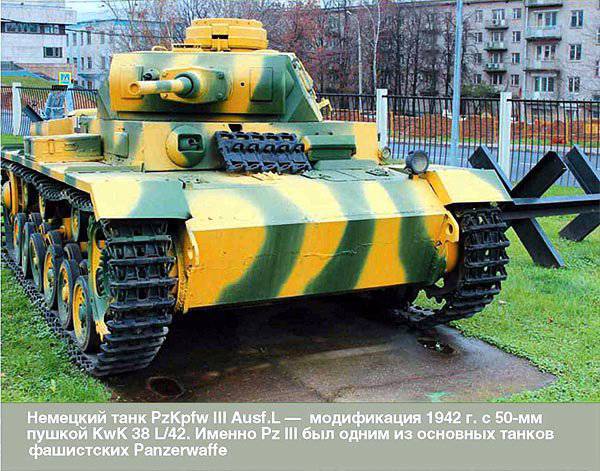
Grabin, later describing these events in his memoirs, admitted that, despite the mutual understanding reached between them, he did not believe in the success of this enterprise at that moment. And the point is not that his design bureau was not yet involved in tank guns, he was not afraid of difficulties and was completely confident in his team. He simply understood perfectly the tendencies prevailing at the time in armored control. The hope that the leadership would drastically change its policy of creating high-speed light tanks and issue a design task for a powerful, and therefore obviously heavier and bigger cannon, was very unsteady. But Vasily Gavrilovich clearly underestimated the purposeful and initiative Sorkin, who soon arrived at the plant quite officially with an order for a new gun. In the design bureau, a unit was immediately created for the development of tank guns, and the commander-in-chief of Grabin, Pyotr Fedorovich Muravyev was appointed the head. It should be noted that the chief designer while continuing to take an active part in the design of tank guns.
But the path to the creation of powerful tank artillery was not as short as we would like. After all, the designer, above all, must meet the tactical and technical requirements submitted by the customer. And the first order of Grabin was the creation of a ballistic cannon, similar to the universal Kirov L-11. The desire to arm different types of tanks with a single weapon was by itself not a good idea, although this was already implemented with the CT-28 and with the 20-K. But for the beginning, the KB had to fulfill these requirements, although Grabin considered them too low. GAU, apparently, considered these works so unpromising that it did not even determine the type of tank and, accordingly, the dimensions of the gun. The way out of this situation was found by the same tireless Sorkin, who, together with military engineer V.I. Gorokhov was able to convince the authorities and deliver the BT-7 1935 light tank to the factory. Since there was no choice, the designers reasoned that “if the gun fits into the light tank, then any other one.”
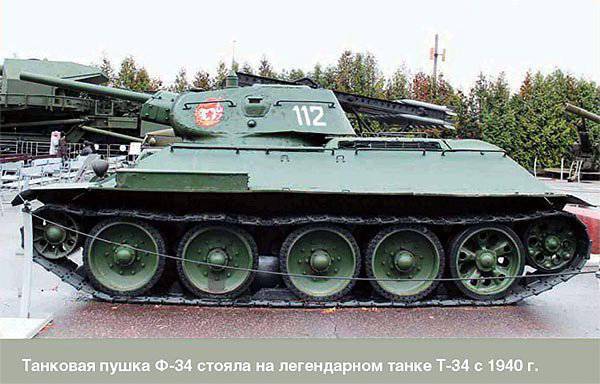
Group Muravyev set to work. The new gun received the index F-32, for its basis was taken the construction of the divisional F-22. The ballistics of the gun was fully determined by the TTT: caliber 76 mm, projectile from the divisional gun, barrel length 31.5 caliber. As Pyotr Fyodorovich recalled: “The main difficulty was that it was necessary to ensure the minimum transverse size of the tool and the shortest distance from the axle axis to the internal contour of the sleeve. In addition, the gun must be absolutely balanced relative to the axle axis. It was necessary to strive to reduce the dimensions of the tower to a minimum and avoid going beyond the front of the cradle. The distance from the breech slice to the internal contour of the sleeve determines the rollback length of the gun, which should also be as short as possible. This, in turn, created an additional difficulty in ensuring the normal operation of semi-automatics for opening and closing the shutter wedge. Something in which the design was facilitated: it was necessary to create only a swinging part and a lifting mechanism. The upper machine and gun carriage should be the tank tower. ”
About a month later, a preliminary design was prepared, later approved by the GAU. The barrel of the F-32 consisted of a free pipe and casing. The wedge is vertical wedge, its design was distinguished by its easy handling and manufacturing. Semiautomatic copier type. The brake recoil hydraulic nakatnik hydropneumatic. The initial velocity of the projectile weighing 6,23 kg was 612 m / s.
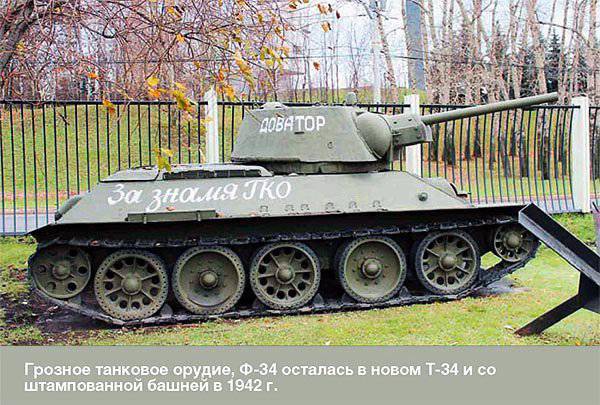
In March-May, the 1939, the L-11 and the F-32, were tested at an artillery RKKA experimental test range. Tests were carried out on T-28 and BT-7 tanks. The F-32 F-11 problems that appeared with the copper-plating of the barrel quickly resolved, while the L-32 had flaws in the recoil devices, as they say, "inborn." With a certain shooting mode, the gun was guaranteed to fail, which Grabin had pointed out more than once. As a result of the tests, in particular, a number of advantages of the Grabinsky gun over the Makhanovsky were established: “The F-11 system has the following advantages over the L-32 system for arming tanks: The F-28 allows you to have one system for both T-7 tanks and and for BT-32 type tanks. F-32 is more convenient in handling, operation, during assemblies and disassembly, more simple and reliable. F-100 does not require a special cylinder or pressure gauge on 11 atm. Recoil devices are more reliable than in L-32, have less resistance to rollback and a shorter length of maximum rollback. F-6 has a much thicker pipe (in the muzzle on 32 mm), which is more advantageous for protection from splinters. The layout of the F-11 system and its dimensions (especially transverse ones) are more advantageous than in the L-XNUMX system. ”
It is not difficult to estimate that all the difficulties surmounted by the design bureau of plant No. XXUMX only went to the benefit of the new tool. According to the test results, both guns were put into service: the F-92 as the main one, and the L-32 as the reserve one. The fact is that the L-11 was a modified and extended L-11, which was already at the stage of gross production, and F-10 had only to begin to master. Therefore, the L-32 was also placed on the first models of the KV-11 and T-1.
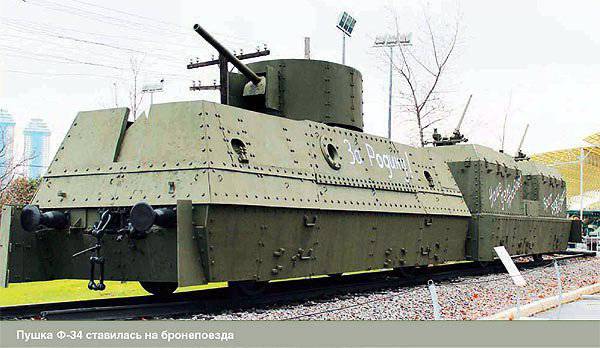
But Grabin did not stop at what had been achieved and almost immediately joined in the design of a new, more powerful tool for a promising medium tank. Having learned about the desire of GAU to arm a new 76-mm machine gun, he did not offer his F-32, but decided to start work on a more powerful and promising gun. And again, he was warmly supported by Sorkin and Gorokhov. The new gun received the index F-34 and, basically, was an F-10 gun elongated by 32 calibers. Ballistics coincided with the F-22USV divisional gun. Thus, the initial velocity of the projectile reached 662 m / s.
In October, 1939 passed the first tests of the new gun. There is an opinion that F-34 was originally intended to re-equip the T-28 and T-35 tanks, but was later abandoned. Grabin was given the go-ahead to link the gun with the new tank, developed under the leadership of A.A. Morozov. According to the memoirs of Vasily Gavrilovich himself, the designers really liked the new gun, and the two design bureaus reached a complete mutual understanding. But the Winter Warfare 34-1939 made adjustments to the timing of the adoption of the F-40, and the gun on the BT-7 was sent to the front. In November, the 1940 gun was tested on the T-34 tank, and the Grabin Design Bureau received the official TTT for the gun, which were nothing more than a copy of the requirements developed and already implemented by the Grabiners.
The tank gun F-34 has become one of the most massive guns of the Red Army, according to some sources, 38.580 guns were made. She was placed on armored trains, motorized armored wagons, she also armed with armored boats of the 1124 project. You can talk for a long time about the tests and the struggle of the designers for their offspring, give statistics, figures. But it is more important to note the achieved result. Assessment Grabinsky gun gave the war. And here, as you know, there is no better praise than recognition of the enemy. This is what German General B. Muller-Hillebrand wrote about the impression that the new Soviet tanks made on the German troops: “By the beginning of the campaign, the Red Army received a new T-34 tank, which the German ground forces could not oppose either an equivalent tank or appropriate defenses. The appearance of the T-34 tank was an unpleasant surprise, because it is due to its speed, high maneuverability, enhanced armor protection, armament and mainly the presence of an elongated 76-mm gun, which has increased accuracy of shooting and piercing ability of projectiles at a large, still not attainable distance, was a completely new type of tank weapons". The question was only in the number of cars, and the number of T-34, as well as the KV-1, only grew during the war, despite the evacuation of factories and people, huge losses and military failures of 1941.
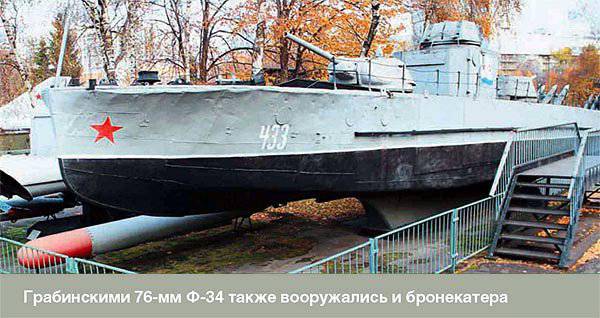
Of course, the situation, when the heavy KV-1 is armed weaker than the average tank, didn’t like Grabin very much. And for a start, he decided to at least level them in power, starting the remake of the F-34 under the KV-1. The new gun received the ZiS-5 index and differed from the F-34 in the cradle design, device and fastening lock, as well as a number of small parts. Despite the designer’s further efforts, it was ZiS-5 that was “pre-written” in the KV-1 and its modifications KV-1 from the very end of the production of these tanks. Approximately 3500 ZIS-5 cannons were manufactured.
And efforts, it should be noted, were. Back in 1939, the team of Vasily Gavrilovich began, on a proactive basis, designing the X-NUMX-mm tank gun F-85 with an initial velocity of a projectile weighing 30 kg in 9,2 m / s. In the summer of 900, the gun was tested on the T-1940 tank, but it didn’t go further than the prototype KV-28 tank. But in the middle of the war they would return to the re-equipment of KB 220-mm guns with a competition between Grabin and FF. Petrov, and D-85T Petrova will win. But by then, the HF-5 will be an outdated solution. In parallel with the F-85, Grabin led work on the creation of an X-NUMX-mm tank gun, the F-30, but after successful factory tests, work on it stopped. In 85, Vasily Gavrilovich proposed the design of the X-NUMX-mm tank gun F-39, which had many units from the F-1940. In March, the 107 F-42 in the KV-39 tank successfully passed the factory tests, which was reported to GAU and GBTU, but absolutely no reaction followed. All of these tools were made in an orderly manner. What does it mean? This means that the designers did not receive the order, and therefore the money to develop these tools. And in fact, many of the Grabinsky weapons, which became legendary, were at first initiative and “illegitimate”.
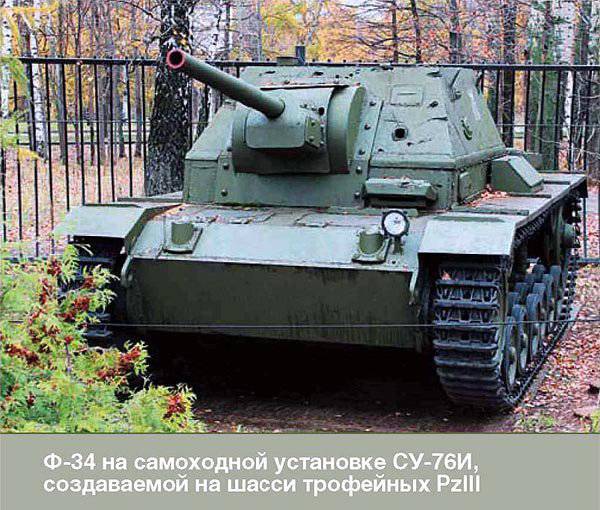
But very soon the initiative came from above. At the beginning of 1941, the leadership of our country received intelligence about the creation of heavy and well-armored tanks in Germany. As it turned out later, it was a well-organized misinformation in order to weaken our field artillery. The Nazis hoped for a blitzkrieg and did not think that Soviet industry would have time to recover and restructure. Nevertheless, now Stalin himself raised the question of arming a heavy tank with a powerful 107-mm cannon before the tank crews. And no matter how paradoxical it may sound, he received a categorical refusal from them. In one voice, he argued that such a powerful, large and heavy weapon simply could not be put into a tank. After that, Stalin addresses Grabin directly by telephone with the question whether it is possible to put a powerful 107-mm cannon on a tank. Vasily Gavrilovich, referring to the experience with F-42, answered affirmatively.
Here's how, according to the memoirs of Grabin himself, Joseph Vissarionovich commented on this question: “This is very important, Comrade Grabin. Until we arm a heavy tank with such a cannon, we cannot feel calm. This task needs to be solved as soon as possible. You can see for yourself what the international situation ... "
The next day, Grabin was on the commission to create new heavy tanks, chaired by A.A. Zhdanov. Here, the indefatigable artilleryman again had to clash with representatives of the armored control and tank designers, in particular with J. Ya. Kotin. Of course, there was a sense in their arguments: tankers did not want to increase the weight and size, increase the complexity. But there were long-standing prejudices. Once again they stubbornly asserted that a long gun was buried in the ground while overcoming obstacles. They used to say about Grabin that he was ready to drag any cannon into a tank, and in the heat of disputes, he said that “a tank is a wagon for a cannon”. Anyway, the work of the commission nevertheless moved into a rational direction, and most of the issues were settled. It remained only to clarify the timing. Here Vasily Gavrilovich and stunned everyone with his statement that he would make the gun in 45 days!
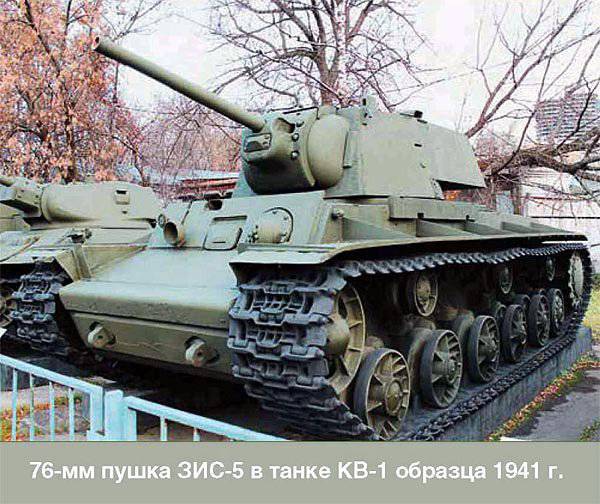
What prompted an outstanding artillery designer to set himself so short a time? This is probably Stalin’s telephone message and a desire to set new rhythms in the creation of weapon systems for the rest and, above all, for himself and his design bureau. It was also a test of the progressive, unparalleled Grabin method of "high-speed design." The close intertwining of the work of designers and technologists, the maximum unification of parts and assemblies, the constant improvement of the design and technological process are the cornerstones of this method. Now any engineer will tell you that the manufacturability of the design and the maximum use of standardized parts is the law for any designer. But it wasn’t always, once these principles were not a word, but the case was proved to the whole world only by a group of designers of the design bureau and technologists of the plant. In April, 1941, even among them, far from all believed in the success of their business. But their leader believed in them, and he was able to convey his confidence to everyone.
The order to create an 107-mm tank gun ZIS-6 was issued on April 6, but the tests of the prototype on the KV-2 tank began only 38 days after the start of work! It turned out to be a world record, which has not been beaten to this day. 19 May 1941 g. Grabin already reported on the successful results of factory tests Zhdanov. As a model for the new gun, the F-42 cannon scheme was used. The same caliber allowed unify many details and components. Changes and processing were required only due to a significant increase in the power of the new product — the initial velocity of the 16,6-kg projectile was 800 m / s. In connection with a significant increase in the weight of the projectile, Grabin decided to introduce a “mechanical loader” device into the design, which greatly simplifies the crew’s work. Even in such a short time Grabin did not forget to think about the convenience of using his product. The team of the plant number XXUMX fully coped with such a difficult ordeal. The gun, even with such terms of design and manufacture, proved to be successful, reliable and convenient. But the unprecedented development of a new weapon had to be stopped first and then completely turned off. "Tankers" could not create on time the tanks KV-92 and KV-3, and during the war the work on them was stopped. KV-5 initially remained on paper.
TOOLS OPERATING ITS TIME
In 1941, Vasily Gavrilovich completed the creation of his legendary “three-inch” –76-mm ZiS-3 divisional gun. It was the first artillery gun in the world, put on a conveyor assembly, and the most massive gun of the Second World War. A simple, reliable, lightweight and powerful enough divisional weapon gained respect even among the best gunsmiths of the Wehrmacht. Here is how Professor W. Wolf, then head of the Krupp artillery department, put it: “German guns in general exceeded guns of other states, with the exception of the Soviet Union. During World War II, I tested captured French and English guns. These tests clearly demonstrated the superiority of German systems. And therefore, the opinion that the ZIS-3 was the best gun of the 2-th World War is absolutely true. Without any exaggeration, it can be argued that this is one of the most ingenious designs in the history of barrel artillery. ”
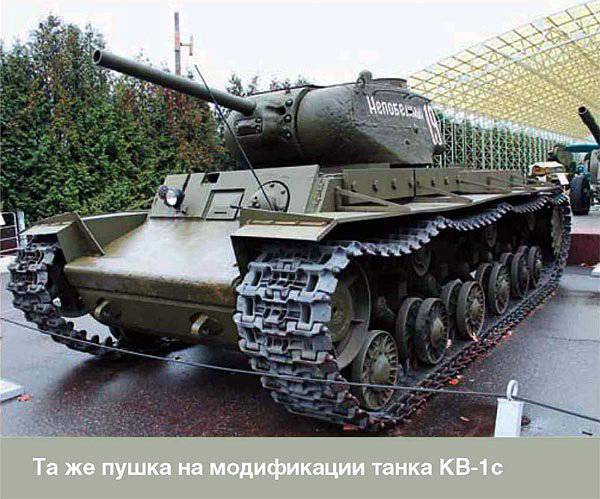
During the war, the ZIS-3 was put on several self-propelled guns. We tried to put the ZIS-3 on the base of the T-60 tank, but after producing the prototype OSU-76, the work was curtailed. The self-propelled gun based on the T-70 tank received the designation SU-12, after revision became the SU-76. The greatest contribution to its creation and modernization was made by S.A. Ginsburg. ZIS-3 was put there almost unchanged, with cropped beds. SU-76 had a number of flaws, in particular the unreliability of the gearbox and the main shaft. The ill-conceived layout and closed cabin without exhaust ventilation turned the fighting compartment into a living hell for the gunners. "The mass grave for four" - so in the hearts of her crew called. In July, the 1943 was replaced by the SU-76 by the SU-76М, with a modified attachment of the gun, a modified transmission and a cabin open from above and behind. By 1943, the tactics of light self-propelled guns changed - previously they were used as an unequal replacement for tanks. Changed the attitude of the soldiers to the modified car. The light and maneuverable self-propelled gun SU-76М has become a universal machine for counter battery combat, destruction of tanks and infantry support. Total order was released 14.000 SU-76M self-propelled guns.
In 1944, in the design bureau of the Gorky Automobile Plant under the direction of V.A. Grachev was created original wheeled self-propelled gun KSP-76. GAZ-63 all-wheel drive truck was used as a chassis. The armored hull was open at the top. The ACS had a very low silhouette, but at the same time a lack of maneuverability. KSP-76 in service with the Red Army never arrived.
By 1943, the advantage of our thirty-fours was wiped out. German tanks Pz.VI "Tiger" and Pz.V "Panther" appeared on the battlefield. The fears of Vasily Gavrilovich and some other enthusiasts justified themselves: the Germans, despite the fact that they did not have such well-armored and armed vehicles at the beginning of the war, very soon managed to create them. The Pz.V had frontal armor in 75 mm and 75-mm gun with a length of 70 caliber, the Tiger had frontal armor in 100 mm and a powerful 88-mm gun with a length of 56 caliber. The T-34, armed with the powerful X-NUMX for the F-1941, sometimes did not penetrate the 34-mm Pz VI side armor from 80 meters. A "Tiger" confidently beat thirty-four at ranges to 200 m.
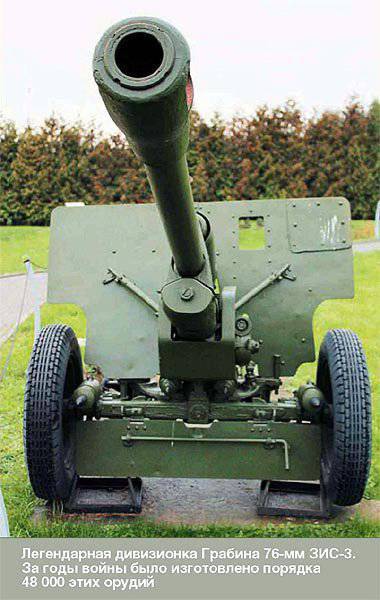
As a result of the shelling of the captured Pz.VI at the Kubinka 25-30 site on April 1943, it turned out that the 85-mm anti-aircraft gun 52-K developed in 1939 by M.N. Loginov. In this regard, it was decided to arm the T-34 with a cannon with similar ballistics. First, the choice fell on the gun D-5T, which previously showed better results on the tests than the grabinskaya C-31. Proposed by F.F. Petrov gun D-5T had very good weight and size characteristics, but it was very difficult structurally, while the layout of the tower, because of the design features of D-5T, extremely difficult for the crew to load the gun. There were also frequent failures of the lifting mechanism. As a result, the creation of the cannon was entrusted to the Central Artillery Design Bureau (TsAKB) under the leadership of the then lieutenant general of the technical troops Grabin, which was formed on November 5 1942 of the year. In October - November, the 1943 team of the CACB offered two experimental tools, the C-50 and C-53, which were tested together with the LB-1 tool. For simplicity and reliability, the C-53 gun was adopted, after completion it received the ZIS-C-53 index. And again, the Grubiners were able to surprise: the cost of the new 85-mm gun was lower than the X-NUMX-mm F-76 gun! It was ZiS-C-34 that gave the T-53 a new power it needed, making it a fascist thunderstorm until the very end of the war. In all, 34-1944 produced the order of 45 C-26.000 and ZiS-C-53 guns.
In the autumn of 1943, Mr. Grabin proposed a new 76-mm cannon to replace the F-34. A gun with a barrel length in 58 calibers accelerates a projectile weighing 6,5 kg to a speed of 816 m / s. The gun with the C-54 index was recommended for use, but after the manufacture of 62 guns, production was curtailed. In addition, Vasily Gavrilovich offered his own version of a cannon for arming self-propelled guns SU-85, but for one reason or another, the D-5С gun (modernization of D-5Т) was preferred. As a result, the grabinsky version for arming the SU-100 was also rejected - the Petrova’s D-10 gun did not require re-assembly of the SU-85 case.
Even before the release of the official decree, CACB designed the 122-mm C-34-II with the ballistics of the A-19 cannon. For the armament of tanks, the IS of Petrov KB created its own version with the D-25T index. Grabin's gun had the best accuracy, it lacked a muzzle brake, unmasking shooting, which is very important for the tank. In addition, the gases from the shot can hit your own infantry on the armor and next to the tank. But the tank builders did not want to redo the turret of the EC-2 tank, which the D-25T fit into.

Among other things, during the war years, TsAKKB designed powerful 122-mm gun C-26-I with improved ballistics and an 130-mm cannon C-26 for tanks and self-propelled guns. The C-26-I cannon accelerated 25-kg projectile up to speed 1000 m / s, and C-26 33,5-kg projectile up to speed 900 m / s. 4 August 1945. Grabin's guns successfully passed the tests, but were not accepted for service. As it repeatedly happened, the power of the Grabinsky guns was considered excessive.
In 1945, the team of J.A. Kotina began designing a heavy tank, the EC-7. The tank had body armor at the front and sides of the 150 mm, and the front wall of the tower had a thickness of at least 210 mm. In the same 1945, the Grabin Design Bureau began the development of the 130-mm C-70 tank gun. The gun had a mechanized loading and, for the first time in the national tank artillery, a mechanized ammunition. The 33,4 kg projectile reached the 900 speed in m / s and the direct shot range was 1100 m. The armor-piercing projectile at the 30 degree was able to penetrate 140-mm armor at a distance of two kilometers. In 1948, on the tests of the EC-7 tank, the C-70 gun showed good results. In 1949, an order was issued for the manufacture of a batch of 50 tanks, but in the same year a decree was issued to discontinue work on all tanks with a mass over 50 tons.
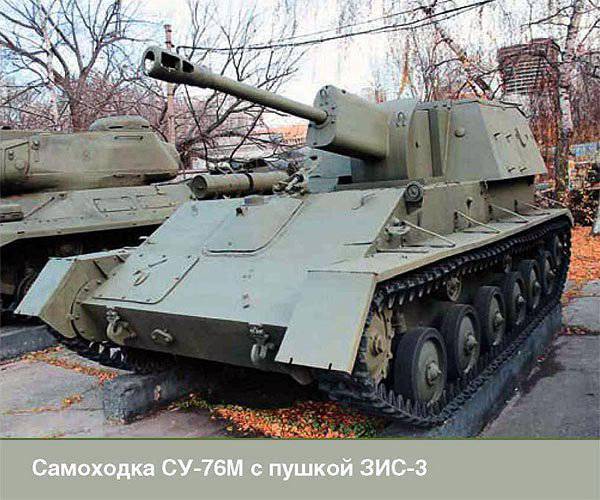
I would like to cite the opinion of the well-known military historian A. B. Shirokorada: “Termination of work on the EC-7 was a blunder of our leadership, not only military-technical, but also political. Even a small (for the USSR) series of 500-2000 tanks of EC-7 would have made a great psychological impact on the likely adversary and would force him to spend many times larger sums to create the means to fight them. The use of EC-7 in Korea, during the blockade of West Berlin and in other local conflicts would have a great military and political effect. The refusal of the C-70 gun was generally an unforgivable mistake ... "
In 1949, Grabin presented a design for the 100-mm tank gun with the “0963” index for arming the T-54 tank, which was stabilized in two planes. But for unclear reasons, the gun "0963" was not adopted. Note that in 1951, the Central Research Institute-173 (now Central Research Institute AG) a Horizon device was developed to stabilize the D-10Т gun only in the vertical plane. The production of a gun with this device began in 1955, although Grabin had proposed a gun stabilized in both planes even after 6 years before.
ANTI-TANK GUNS
After highlighting the contribution that VG Grabin with his team contributed to the development of domestic tank technology, attention should be paid to the means of anti-tank combat developed by him.
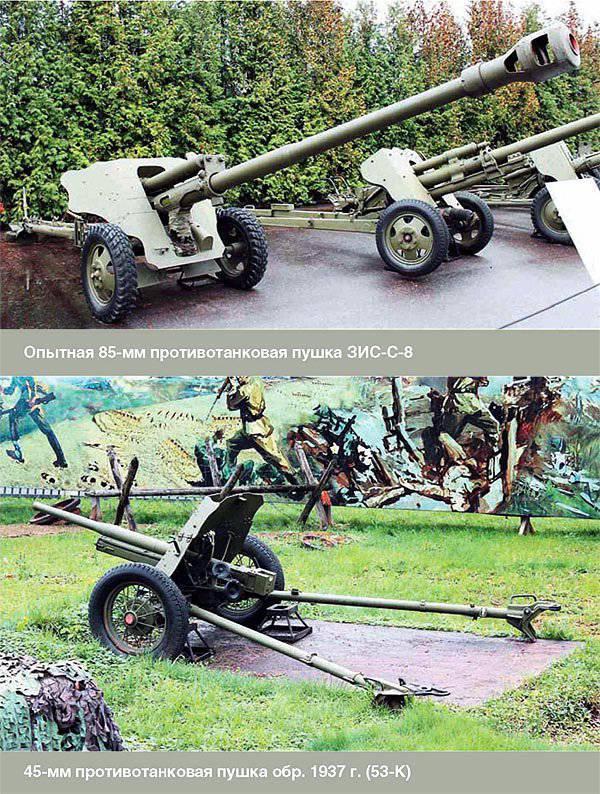
Back in 1940, Vasiliy Gavrilovich proactively imposed an 85-mm barrel on the already-mentioned Loginov anti-aircraft cannon on an F-28 gun carriage. A new gun with the index F-30 successfully passed factory tests at the beginning of 1941, but with the start of the war, the work was curtailed.
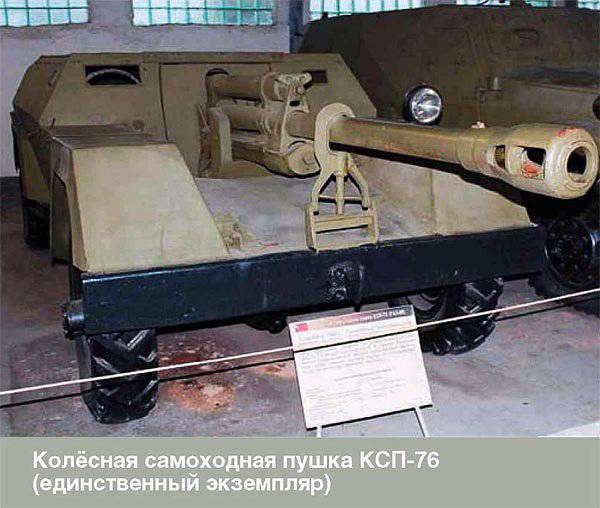
Work on anti-tank guns with anti-aircraft 52-K anti-aircraft guns was resumed by the Grabin team at the end of 1942. In 1943, the anti-tank gun C-8 was developed at 8 and tested at the end of the year. From the manufacturer, the gun received an additive to the index and was called ZiS-C-8. During the tests, a number of shortcomings were revealed, in particular, the low strength of the muzzle brake, poor extraction of the liner and the unsatisfactory performance of the recoil devices. These were not too serious shortcomings for the experimental system — they were always eliminated in the process of refinement. But ZIS-C-25 had two competitors: gun BL-44 and D-8 with the same ballistics. And they revealed similar shortcomings. Here is what AB writes about this. Shirokorad: “Test data for all guns were about the same. It should not be forgotten that the Grabin cannon outstripped competitors by a year and a half. And in the course of testing both competitors revealed the same diseases as ZIS-C-8 ... The very idea suggests itself that the troubles of the ZIS-C-1946 cannon are not due to technical, but to subjective reasons, including Ustinov’s dislike for CACB and Grabin personally. " After a long development in 85, the X-NUMX-mm divisional gun D-44 was adopted.
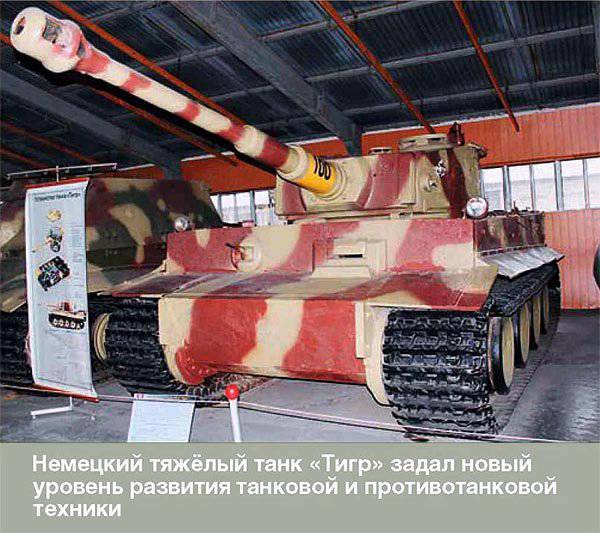
In the prewar period, the main anti-tank gun of the Red Army was the 45-mm anti-tank gun 53-K, developed by Loginov in 1937, by superimposing an 45-mm barrel on the gun carriage of the German 37-mm anti-tank gun. 53-K fully complied with the concept of pre-war armored troops: small and light, it perfectly hit tanks with anti-bullet armor. After all, the main requirement in conditions when the level of the enemy is not sufficiently unknown is the ability to hit their tanks. Of course, this is a very simplified view: exploration is under way, the enemy’s industry is being assessed, and much more. The basis of the Soviet armored forces, as already mentioned, were light and maneuverable tanks. Therefore, with the enemy light tanks 53-K coped well. But with the same Pz.III the situation was different. Although the machine was capable of striking these machines, it was already with great difficulty: at a distance of 1 km, the armor penetration rate of the gun was 28 mm at a meeting angle of 30 degrees to normal. Therefore, our gunners and had to let the German tanks at a distance of "dagger" fire - to confidently hit the enemy tank. Another acute problem in the fight against the fascist Panzerwaffe was the lack of armor-piercing shells, and the quality of the existing ones left much to be desired. In some batches, every second projectile, when hit the target, did not pierce it, but cracked. More effective armor-piercing sabots in the Soviet Union appeared only in 1942 year.
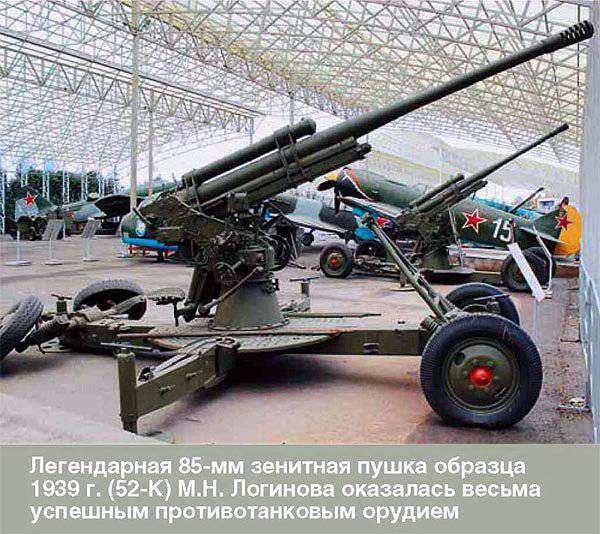
In the Finnish campaign, we demonstrated our newest KB tanks, and it was naive to believe that our likely opponents would ignore the appearance of such machines. By the beginning of the war, the Germans had both sabot and cumulative projectiles, but kept them to great need in secret.
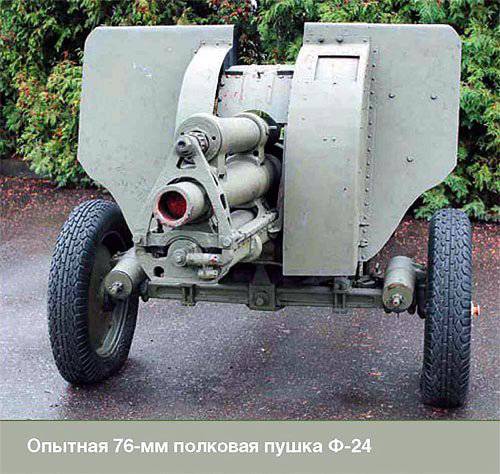
But we ourselves had to support the concept of matching our anti-tank weapons to our tank weapons. Grabin adhered to this opinion. At the beginning of 1940, Vasily Gavrilovich was set to create the first domestic anti-tank gun capable of piercing armor in 50 – 70-mm. Initially, he and his team engaged in research in the field of cannons with a tapered barrel, because such a solution allowed to get more power with a relatively small barrel length. However, the manufacture of such barrels proved to be extremely difficult, as well as the device used shells. Therefore, in 1940, Vasily Gavrilovich limited himself to research work and experiments with a single barrel. In parallel with these studies, Grabin led work on the creation of an anti-tank gun with a conventional, cylindrical barrel. The designer enlisted the support of Commissar of Weapons B.L. Vannikova and received the go-ahead for the design of a powerful anti-tank gun according to his own requirements. After research and meetings with the Artillery Committee of the GAU and the Artillery Academy. Dzerzhinsky KB chose the most profitable caliber for a relatively light anti-tank gun - 57 mm. The new gun received the index F-31. His TTT Grabin approved in September 1940, when the work was already in full swing. The basis of the gun was based on the design scheme of the 76-mm regimental cannon F-24. In addition to the imposition of 57-mm barrel length 73 caliber required processing only the nakatnik and some other nodes. A new armor-piercing projectile weighing 3,14 kg was adopted for the gun, the initial velocity was 990 m / s. At the beginning of 1941, this gun Grabina received the index ZIS-2.
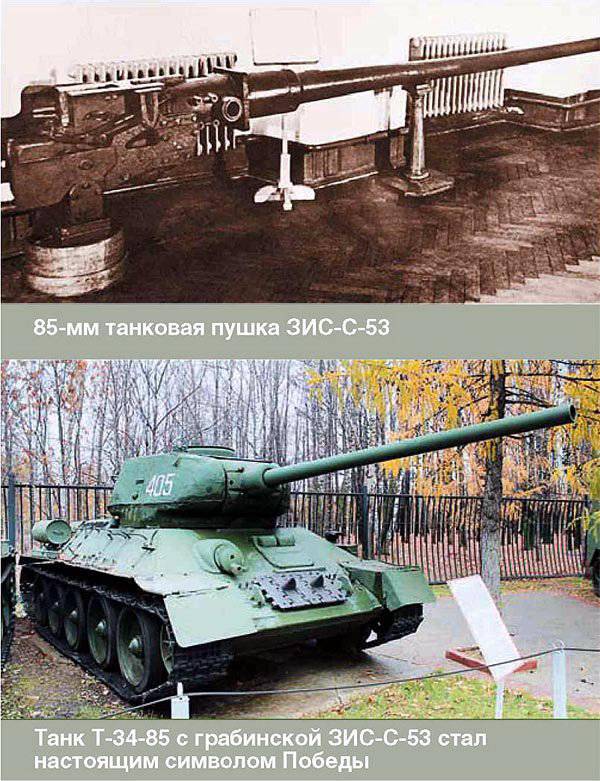
In October, 1940 began factory testing, which resulted in an error in the choice of the steepness of cutting the trunk. But Stalin trusted Grabin very much and gave permission to launch the gun into production. The designer did not let him down - with the new cutting, the accuracy of the gun became brilliant, like the rest of its characteristics. In parallel, Vasiliy Gavrilovich led the work on other lengths of trunks, but all of them were soon discontinued. At the beginning of the 1941, the ZiS-2 gun was officially adopted. But already during the war, in December 1941, the production of the gun was suspended. Such a long barrel was extremely difficult to manufacture, and the first months of the fighting showed the excessive power of the cannon — the ZiS-2 “pierced” enemy tanks through and through. It was, perhaps, the first case when the gun was rejected because of excess power! The armor penetration of the ZIS-2 at a distance of 1 km at a meeting angle of 30 degrees to the normal was 85 mm, and when using streamlined snapping shells, this figure increased by one and a half times.
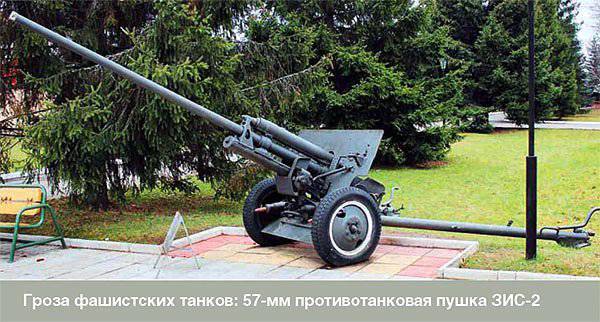
The appearance of the "Tigers" forced the military to place accents in a new way, 15 June 1943. The gun ZiS-2 was again adopted. However, a small number of these beautiful guns shifted the main burden of fighting the German "menagerie" to the same ZiS-3 division, which was clearly not intended for this. The armor penetration of the ZIS-3 under similar conditions was only 50 mm.
With its outstanding power, the ZIS-2 was a very lightweight weapon - just a little more than 1000 kg. For example, the German 75-mm Cancer 40, which is close to it in power, turned out to be one and a half times heavier, and the 38 Cancer, which is close in mass, was almost twice less powerful. In 1943, the Allies asked the leadership of the USSR to provide them with a ZIS-2 gun for research. For all the time it was made about 13.500 guns ZIS-2. To this day, the modified ZIS-2 are in service with a number of countries.
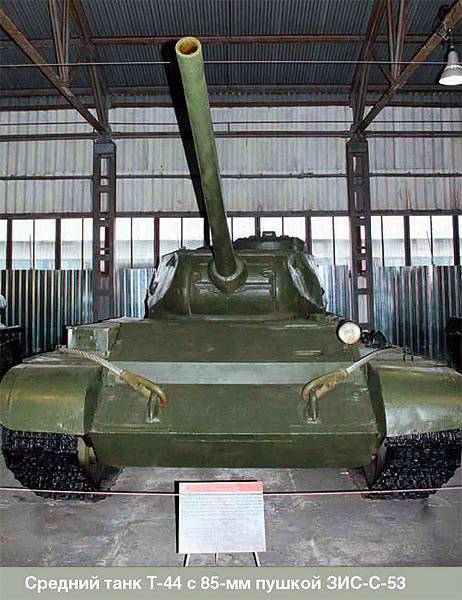
At the end of 1940, Mr. Grabin proposed creating self-propelled guns with ZiS-2. Light installations based on the semi-tracked all-terrain vehicle ZiS-22M and the tracked tractor Komsomolets along with the gun ZiS-3 were presented to Marshal Kulik 22 on July 1941 from which the designer received a categorical refusal. This time it seems that this refusal was for the better, because the ZIS-30 (based on Komsomolets) turned out to be very unstable due to the high height of the firing line with low weight and overall dimensions. However, an experimental batch was made from 104 self-propelled guns. The second self-propelled gun did not even run in the series. But Grabin's next idea turned out to be noticeably more promising. In the autumn of 1940, the designer suggested inserting the ZIS-2 barrel into the swinging part of the F-34 tank gun. In just a few days 15, the ZiS-4 gun was already in the metal. After processing, according to the test results, the plant received an order for manufacturing, and in September 1941 began its mass production. But only 42 guns were made for the T-34 tank - the ZiS-4 gun was waiting for the same fate as the ZiS-2. In 1943, Mr. Grabin will try to reanimate the project, but only a small series of ZiS-4 will be released. It would be somewhat pompous to say that the mass production of T-34-57 tanks would completely change the whole course of the war. But, of course, even relatively small batches of these fighter tanks could consolidate the superiority of our armored forces back in the 1942-43 years, “breaking off the fangs” of the Panzerwaffe.
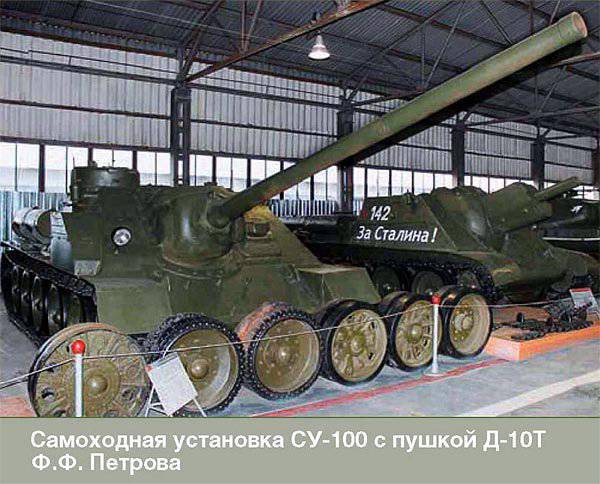
The appearance of "Tigers", "Panthers" and "Elephants" (originally called "Ferdinand") led not only to the re-equipment of the T-34 and the resumption of production of the ZiS-2. Su-122 and SU-152 self-propelled guns, although they successfully fought with heavy tanks, but this was corps assault artillery - the destruction of tanks was not part of its immediate tasks. In 1943, Mr. Grabin set about creating an anti-tank gun based on the X-NUMX-mm naval gun B-100. The September 34 prototype gun with the C-14 index was sent to the Sofrinsky test site. This was followed by improvements at the Bolshevik plant. The gun received the index BS-3. 3-mm gun with a barrel length 100 caliber gave 59-kg projectile initial speed 15,6 m / s. The muzzle brake absorbed 900% recoil energy.
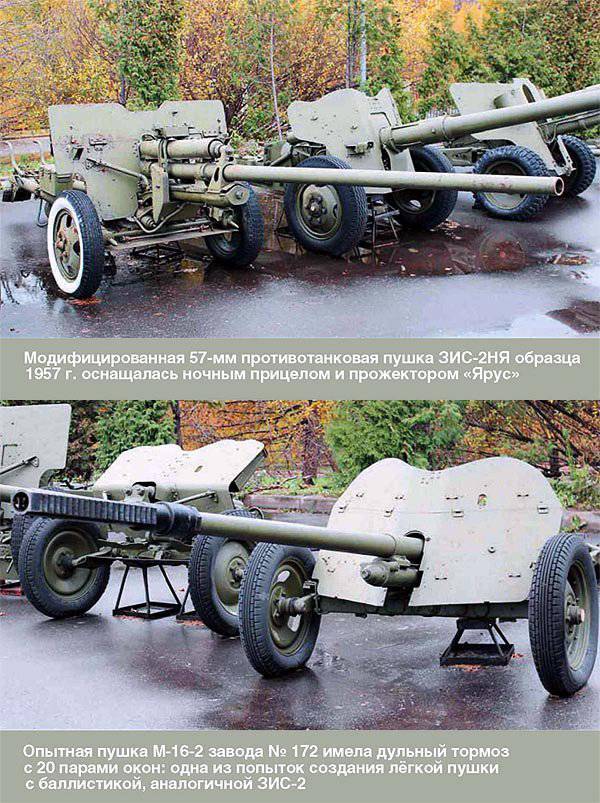
15 April 1944 was fired from captured Tigers and Ferdinand at the Gorokhovetsky testing ground. From a distance of 1,5 km, the tank confidently made its way, the SAU armor did not make its way, but the Elephant was guaranteed to fail due to the armor's spalling from the inside. In relation to the BS-3 to Hitler's "zoo", it would be appropriate to say: "What I do not eat, then bite." That is why the BS-3 and nicknamed "grabinsky hunter." From a distance in 3 km at an angle of meeting 30 degrees to the normal, the armor penetration rate of the new field gun was 100 mm. Until the very end of the war, the enemy could not oppose the BS-3 of any tank other than the Pz.VIII "Maus", but she could easily hit even his new cumulative projectile. However, taking the "Mouse" into account is a tribute to the formalities: only two of these 200-ton monsters were made.
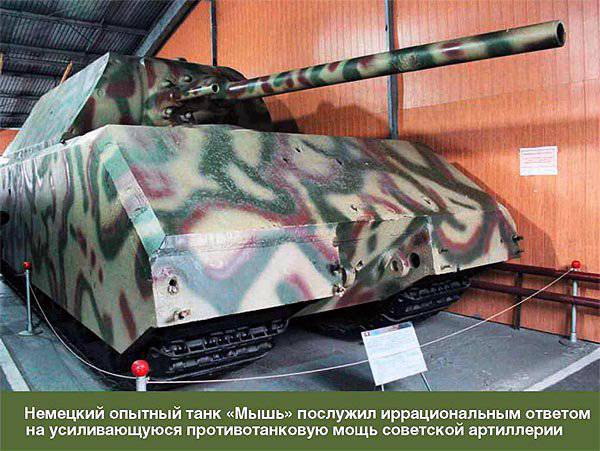
Prior to the start of the 1960-s, this 100-mm field gun mod. 1944 could successfully penetrate the armor of any Western tank without cumulative projectiles. Production of these guns was discontinued in 1951. Approximately 3800 BS-3 guns were manufactured. Until now, these weapons in small quantities are in service with a number of countries, including the Russian Federation.
On the same gun carriage as the BS-3, TsAKKB in parallel developed a powerful 85-mm C-3-1 cannon and 122-mm C-4 cannon with ballistic A-19 cannon. The C-3-1 ballistics were significantly superior to the X-NUMX-mm D-85 cannon ballistics. But work on both guns was stopped.
In 1946, Grabin began to develop the 85-mm high-power anti-tank gun C-6, which had the ballistics of the C-3-1 gun. In 1948, a prototype was made and ground tests were started. Despite the successful development, in 1950, preference was given to the F-48 tool. Petrova with similar ballistics, but things were not going well for her either. D-48 was accepted into service only in 1953, and only 28 of them were manufactured.
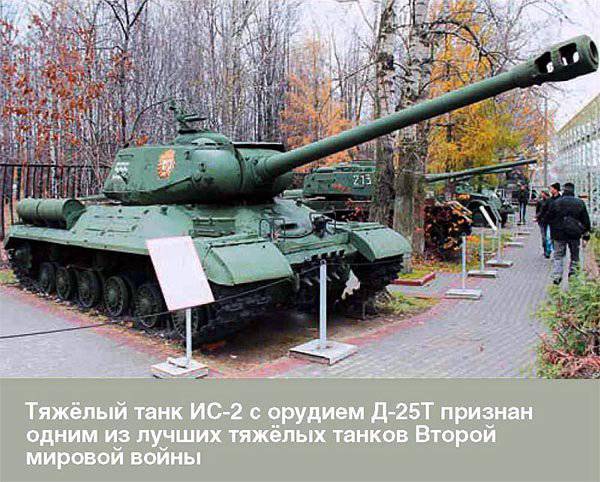
In the same 1946, Vasily Gavrilovich tried to create an even more powerful 85-mm cannon by imposing an OPS-10 experimental trunk on the 152-mm howitzer ML-20 gun carriage. The barrel had a length of 85,4 caliber, that is, much longer than any anti-tank guns then available. The initial velocity of the 9,8-kg projectile was 1200 m / s, which was also a brilliant result. In 1948, field tests were carried out, but no further work was carried out anymore - such power seemed excessive to the military.
Grabin was ready for such a turn of events and in 1947 he produced a prototype 100-mm lightweight field gun C-6-II. It weighed one and a half times less than the BS-3, but at the same time it was inferior in power only by 16%. However, this instrument was rejected without giving any reasons.
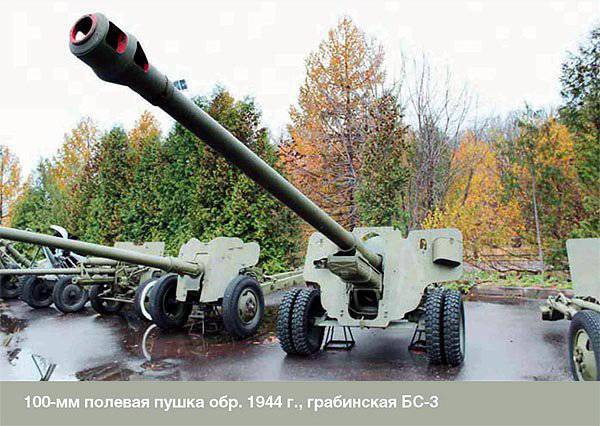
In 1946, CACB returns to work on cannons with a tapered barrel. The reason for this was getting captured German 75 / 55-mm conical guns RAK 41. The caliber of the chamber was 75 mm. and in the muzzle of the 55 mm, the barrel length was 4322 mm. In fact, the trunk was divided into three sections: a threaded cylindrical at the chamber, a smooth conical and a smooth cylindrical to the barrel. Based on these trophies, Grabin began designing the 76 / 57-mm regimental anti-tank cannon C-40. The carriage for the new gun was taken from an experienced gun ZiS-C-8. The prototype C-40 passed ground tests in 1947. Grabin managed to create a system that is one and a half times more powerful than the German prototype: armor in 500 mm penetrated through the 285 m. But the armament system did not come, affected the complexity of manufacturing and a small resource trunk.
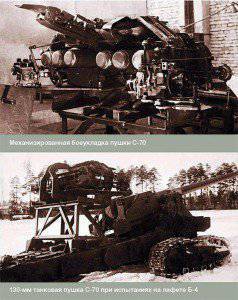
In the second half of the 1950's. KB Grabina, since the end of 40-x referred to as SRI-58, led the development of the project under the affectionate title "Dolphin". And this project was, as much as a radio-controlled anti-tank missile. The designers did an excellent job with the new task, and in 1958 the tests of the finished product began in parallel with the wire-guided ATGM AE. Nudelman. At a distance in 3 km, the Dolphin confidently hit the shield with dimensions 10 × 10 m, and its cumulative warhead confidently penetrated the armor in 500 mm. The Grabin ATGM was inferior to the Nudelman complex only by its large dimensions, and because of the presence of the radio control it was clearly superior to it. But the age of the Grabinsky collective was coming to an end, the works were interrupted and the products of Alexander Emmanuilovich were accepted for service at the beginning of the 1960's.
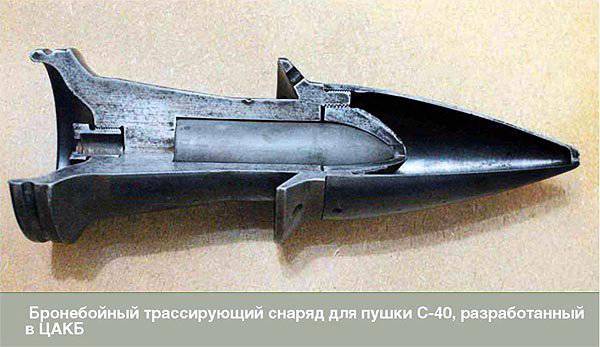
Vasily Gavrilovich Grabin was a very talented and visionary designer, an excellent organizer and an unsurpassed innovator. Before the war, his F-22 and F-22US guns made up half the fleet of the Red Army divisional artillery, the F-22 won the Germans fame for their excellent anti-tank guns and was serially placed on the Kunitsa ACS. His battalion ZIS-3 enjoyed the love of artillery for its simplicity, reliability and unpretentiousness. The tank F-34 provided our tanks with sufficient power in the early stages of the warriors, and the anti-tank ZiS-2 and BS-3 did not know their equal on the battlefields. Its 180-mm C-23 cannon successfully replaced tactical missiles in Arab-Israeli conflicts, and the 57-mm automatic anti-aircraft C-60 became a thunderstorm of American pilots in Korea and Vietnam. His invention was the method of speed design, which reversed all ideas about the development of technical systems. Grabin's design thought was ahead of its time by years, and sometimes even decades: the design of some of its tools was declassified only in the early 1990s.
But many of his guns were not put into service, among them were absolutely unique samples. Such an enterprising, principled and independent designer simply could not fail to make himself influential enemies, which, ultimately, led to the elimination of his design bureau. Colonel-General, Hero of Socialist Labor VG Grabin was dismissed in 1959. Even he could not publish his memories during his lifetime. Until the very end, he honestly could be comforted by the fact that he served the Motherland with his team.
Information